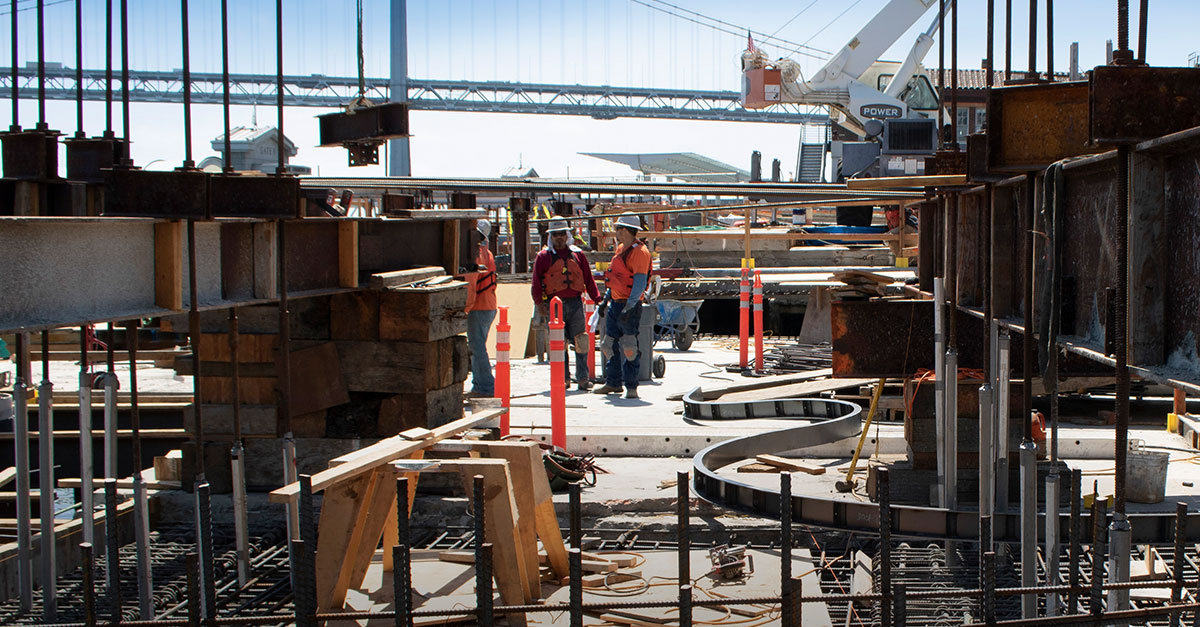What Will It Take for the Construction Industry to Reduce Carbon Emissions?
 Climate change is a global issue that requires all hands on deck. Eco-conscious organizations like the United Nations are developing sustainability targets to reduce adverse ecological effects. Many countries are evaluating different pollution-reduction methods to achieve net-zero emissions.
Climate change is a global issue that requires all hands on deck. Eco-conscious organizations like the United Nations are developing sustainability targets to reduce adverse ecological effects. Many countries are evaluating different pollution-reduction methods to achieve net-zero emissions.
One industry significantly impacting global emissions is construction. It’s one of the largest global polluters — largely because it’s such a resource-intensive and indispensable industry. While we will always need to renovate and construct buildings, researchers are assessing the causes of emissions and developing sustainable alternatives to traditional practices.
How Much Carbon Does the Construction Industry Emit?
Nearly 11% of global carbon emissions derive from the construction industry. Building materials, machines, lights, heating, ventilation and air conditioning (HVAC) systems, and other components contribute to the pollution.
Contractors and subcontractors play a critical role in helping residents shrink their homes’ carbon footprints, which may increase their properties’ values. Residential and commercial buildings produce about 40% of greenhouse gas emissions each year, and construction practices contribute to the general pollution rate. Corporation owners must minimize their adverse ecological impact to achieve the global net-zero emission goal.
Environmental researchers also predict the built environment will double by 2060. You must keep sustainability in mind as you construct more buildings. One area you can evaluate and minimize emissions is material use. Three building materials make up 23% of global greenhouse gas emissions. Concrete produces around 11% of all carbon emissions, while steel and aluminum make up the remaining 12% of pollution.
When you adopt sustainable practices, you can meet emission targets and avoid fines. In addition, your company will gain a reputation for being environmentally friendly. This could lead to more business from eco-conscious consumers who appreciate the efforts.
Why Are Global Organizations Targeting Construction Companies?
Organizations like the United Nations are targeting the construction industry to achieve net-zero goals. The group established a plan to minimize Earth’s temperature by 2 degrees before 2050. The temperature reduction goal is a part of the Paris Agreement.
Environmentalists target builders through the Paris Agreement because most of humanity lives in the built environment. Nearly everyone sleeps, eats and works in buildings. The structures also contribute to individuals’ carbon footprints.
Enhancing your construction company’s sustainability practices allows you to create more green jobs. The sector needs installation professionals, environmental engineers, manufacturers and eco-conscious builders. A workforce like this can help people adopt clean energy systems.
What Regulations Promote Sustainable Construction?
The Department of Energy (DOE) established energy efficiency regulations for buildings. You can help minimize a structure’s energy use by nearly 30% compared to reference codes.
Government sectors also create construction practice regulations to reduce greenhouse gas emissions. The Environmental Protection Agency (EPA) established green building standards that target construction professionals. The International Code Council’s 2012 Green Construction Code (IgCC) outlines environmental performance requirements for buildings.
Some states have independent building regulations called stretch codes. The energy efficiency regulations help regions meet their performance-based targets. You can abide by the efficiency regulations by utilizing sustainable building technologies.
How Can Construction Companies Shrink Their Carbon Footprints?
One of the most valuable technologies in the construction industry is heavy electric machinery. Caterpillar supports the industry’s sustainable transition by developing electric excavators and other equipment.
The electric machinery releases zero tailpipe emissions into the atmosphere and reduces the enhanced greenhouse effect. Caterpillar’s 26-ton excavator contains a 300 kilowatt-hour (kWh) lithium-ion battery and can reduce construction emissions by nearly 52 tons.
You can additionally decrease emissions when you charge your electric machines with renewable energy. You may also install solar panels and geothermal energy systems in new structures. Solar power can shrink a building’s carbon footprint and minimize energy costs.
You may also develop net-zero buildings by installing efficiency-enhancing technologies. Additionally, you can pair geothermal heat systems with smart thermostats to reduce energy waste. The technology regulates indoor temperatures using the Internet of Things (IoT).
The smart system contains sensors that divide buildings into temperature zones. They determine an area’s occupancy level and autonomously alter indoor temps.
Additional Sustainable Construction Practices
You can additionally improve sustainability levels by minimizing material waste. A significant portion of surface-level pollution in this industry comes from the equipment. Unmaintained machines can break and become landfill waste.
Individuals may frequently check and change their heavy machinery’s oil to extend longevity. Efficient equipment uses less power and generates fewer greenhouse gas emissions.
Install efficiency-enhancing features in buildings to minimize freshwater exploitation. Installing a rainwater harvesting system can conserve vital resources. It captures rainwater and runoff in conventional barrels, which pumps move directly to irrigation systems. The remaining water is pushed through a filtration device.
Individuals can use the purified water for cleaning, bathing, drinking, washing and more. You may also reduce ecological degradation by using materials without volatile organic compounds (VOCs). Paints, glues and sealants release VOCs into the environment.
The pollution creates ground-level ozone, which causes smog and overheating. Use VOC-free materials when building to minimize adverse environmental impacts.
How Can Construction Companies Adopt Green Practices?
The U.S. government provides tax incentives to companies taking sustainability initiatives. When you use renewables on a project, you become eligible for financial aid. The Solar Investment Tax Credit (ITC) helps people get 26% back from their initial investment.
You can also take out loans to purchase sustainable equipment. Energy-efficient machinery may improve a business’s customer appeal. About 35% of consumers invest in sustainable goods and services to protect the environment.
Builders that shrink their carbon footprints can increase their profits. Gain a leg up on your competitors by investing in eco-friendly materials and equipment first. Over time, an increase in customers and profits can help you pay off your loans.
Will the Construction Industry Ever Achieve Carbon Neutrality?
Many researchers study the effects of technological advancements on the construction industry’s carbon footprint. They believe construction companies can achieve carbon neutrality by reducing material emissions, applying new technologies and accessing renewable energy sources.
You may adopt these pollution-reduction practices and effectively shrink your carbon footprint over time, leading to a healthy planet and happy consumers. That’s a win for everyone involved.
To understand how Fieldwire can help you and your team manage people and projects more efficiently, please register for a live demo of our platform below.
Rose Morrison is the managing editor of Renovated, where she covers contracting and residential construction topics. Check out her Twitter to see more of her work.

 Rose Morrison •
Rose Morrison • 
















